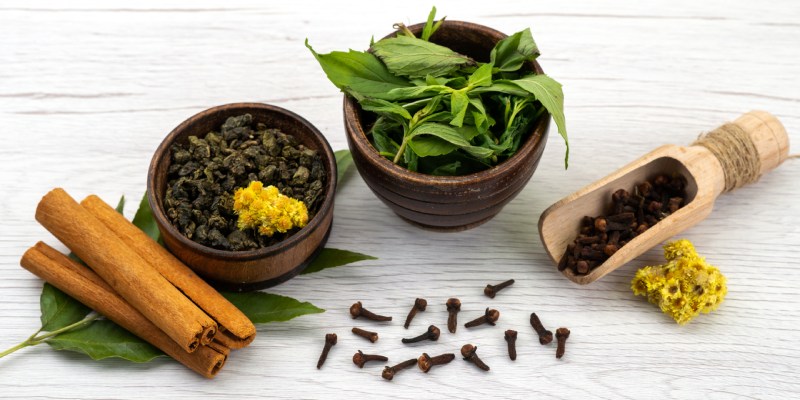In a world where back pain has become increasingly common, Ayurveda offers an ancient and holistic approach to treating lumbar spine issues. This article delves into the realm of Lumbar Spine Treatment in Ayurveda, exploring the natural solutions that this traditional Indian medical system provides.
Understanding the Lumbar Spine

The lumbar spine, located in the lower back, plays a vital role in supporting the body’s weight and facilitating movement. It comprises five vertebrae and any discomfort or ailment in this region can lead to excruciating pain and limited mobility.
Causes of Spine Problems
- Poor Posture: Prolonged periods of sitting or standing with incorrect posture can strain the spine, leading to chronic pain.
- Aging: As we age, the spine naturally degenerates. This can result in conditions like degenerative disc disease and spinal stenosis, affecting the lower back.
- Injuries: Trauma or accidents can cause fractures, herniated discs, or other injuries to the spine.
- Obesity: Excess weight puts added stress on the spine, increasing the risk of pain and discomfort.
Symptoms of Spine Issues
- Lower Back Pain: This is the most common symptom, often described as a dull, aching pain in the lower back.
- Leg Pain: Spine issues can cause radiating pain down the legs, often referred to as sciatica.
- Numbness and Tingling: People with spine problems may experience numbness or tingling in the legs or feet.
- Weakness: Muscle weakness, particularly in the legs, can result from spine issues.
- Limited Mobility: Reduced range of motion and difficulty in performing daily activities are common symptoms.
Lumbar Spine Treatment In Ayurveda
Ayurveda is more than just a medical system; it’s a way of life that focuses on achieving harmony between the body, mind, and soul. In treating lumbar spine issues, Ayurveda adopts a holistic approach that considers the root causes of the problem rather than just addressing the symptoms.
Let’s explore various Lumbar Spine Treatment options in Ayurveda.
Natural Ayurvedic Remedies

Ayurveda offers a wide array of natural remedies for Lumbar Spine Treatment, and one of the most effective approaches is the use of herbal supplements.
Here, explore the best Herbal Supplements for Lumbar Spine.
- Ashwagandha (Withania somnifera): Known for its anti-inflammatory properties, Ashwagandha helps reduce pain and inflammation associated with issues.
- Guggul (Commiphora wightii): Guggul is a potent herb that aids in improving joint flexibility and reducing pain in the lumbar region.
- Shatavari (Asparagus racemosus): Shatavari is highly recommended for its ability to rejuvenate the spine’s health and strengthen the muscles around the lumbar region.
- Boswellia (Boswellia serrata): This herb is a natural analgesic and anti-inflammatory agent, relieving pain and discomfort in the lower back.
- Triphala: A combination of three fruits, Triphala helps detoxify the body, ensuring a healthy and balanced spine.
- Turmeric (Curcuma longa): Turmeric’s curcumin compound offers anti-inflammatory benefits, reducing pain and swelling around the lumbar area.
Yoga and Lumbar Spine Health

Yoga postures designed specifically for lumbar spine health can help improve flexibility and reduce pain.
Here are four useful yoga postures for Lumbar Spine Treatment:
- Bhujangasana (Cobra Pose): This pose gently stretches and strengthens the spine, relieving stiffness and pain in the lumbar area.
- Shalabhasana (Locust Pose): Shalabhasana targets the lower back and helps improve the strength of the lumbar muscles.
- Trikonasana (Triangle Pose): Trikonasana is effective in stretching the sides of the torso, reducing pressure on the lumbar region.
- Ardha Matsyendrasana (Half Lord of the Fishes Pose): This twisting posture promotes spinal mobility, offering relief from lower back discomfort.
Diet and Lifestyle Changes
Ayurveda emphasizes the importance of a balanced diet and a healthy lifestyle to support lumbar spine health.
Here are some food guidelines to follow:
Foods to Eat:
- Green Leafy Vegetables: Leafy greens like spinach and kale are rich in vitamins and minerals that promote bone health.
- Ginger: Ginger has anti-inflammatory properties that can help reduce pain and inflammation in the lumbar region.
- Garlic: Garlic contains sulfur compounds that may provide relief from discomfort.
- Milk and Dairy Products: These are excellent sources of calcium, crucial for strong and healthy bones.
- Fatty Fish: Salmon, mackerel, and sardines are high in omega-3 fatty acids, which have anti-inflammatory effects.
- Nuts and Seeds: Almonds, walnuts, and flaxseeds are rich in nutrients like calcium, magnesium, and omega-3 that benefit spinal health.
Foods to Avoid:
- Processed Foods: Highly processed and fast foods often contain unhealthy fats, sugar, and additives that can contribute to inflammation.
- Sugary Snacks: Excessive sugar intake can lead to weight gain and inflammation, potentially worsening issues.
- Caffeine: High caffeine intake can disrupt sleep patterns and exacerbate lumbar discomfort.
- Alcohol: Alcohol can lead to dehydration and interfere with the body’s ability to heal.
- Sodas and Sugary Drinks: These beverages are high in sugar and offer little to no nutritional value.
- Excessive Salt: High sodium intake can lead to water retention, potentially increasing pressure on the lumbar region.
Lifestyle Guidelines
- Hydration: Drink an adequate amount of water throughout the day to keep the spinal discs hydrated.
- Proper Posture: Maintain good posture while sitting, standing, and walking to reduce strain on the lumbar spine.
Panchakarma Therapy
Panchakarma is a detoxification therapy in Ayurveda. It involves a series of cleansing treatments that help remove toxins and promote healing. Panchakarma can be particularly effective for chronic lumbar spine problems.
Ayurvedic Massages
Ayurvedic massages with warm herbal oils can reduce muscle tension and improve blood circulation in the lumbar region, providing relief from pain and discomfort.
Here’s how you can perform a simple Ayurvedic self-massage:
- Warm the Ayurvedic oil of your choice (such as sesame or coconut oil).
- Apply the warm oil to your lower back and massage in a circular motion.
- Gradually move your hands outward from the spine to cover the entire lumbar region.
- Continue the massage for 10-15 minutes.
- After the massage, rest for 15-20 minutes to allow the oil to penetrate the skin.
- Follow with a warm bath or shower to remove excess oil.
Conclusion
We have provide a detailed guide on Lumbar Spine Treatment In Ayurveda. Ayurveda provides comprehensive treatment options for lumbar spine issues, from herbal supplements to yoga postures, dietary changes, and therapeutic massages. By embracing this holistic approach, individuals can not only find relief but also enhance their overall well-being. Always consult a qualified Ayurvedic practitioner for personalized guidance and treatment.
FAQs
Can Ayurveda help with chronic lumbar spine issues that haven’t responded to other treatments?
Ayurveda can offer valuable alternative options for individuals with chronicproblems that have not responded well to conventional treatments. The holistic approach of Ayurveda, focusing on the root causes, may provide relief where other methods have fallen short.
What dietary changes should I make to support lumbar spine health according to Ayurveda?
Ayurveda recommends a diet that balances the specific dosha imbalances contributing to your problems. Typically, this includes incorporating warm, nourishing foods, avoiding excessive cold or raw foods, and consuming herbs and spices that support spine health.
Are there any specific Ayurvedic exercises for lumbar spine health that I can do at home?
While yoga postures play a significant role in Ayurvedic spine care, some exercises can be performed at home. Simple stretches, abdominal strengthening exercises, and mindfulness practices are often recommended as part of a daily routine.
How long should I continue Ayurvedic treatment for lumbar spine problems?
The duration of Ayurvedic treatment varies depending on the individual’s condition, constitution, and responsiveness to the therapies. A qualified Ayurvedic practitioner will provide a treatment plan and regularly assess your progress, adjusting the treatment duration accordingly.
Can Ayurveda provide relief for acute lumbar spine injuries or only chronic issues?
Ayurveda can be effective for both acute injuries and chronic problems. In cases of acute injury, Ayurvedic treatments and therapies can help reduce pain, inflammation, and promote faster healing. However, the treatment approach may vary between acute and chronic conditions, so consulting with an Ayurvedic practitioner is essential for the best results.